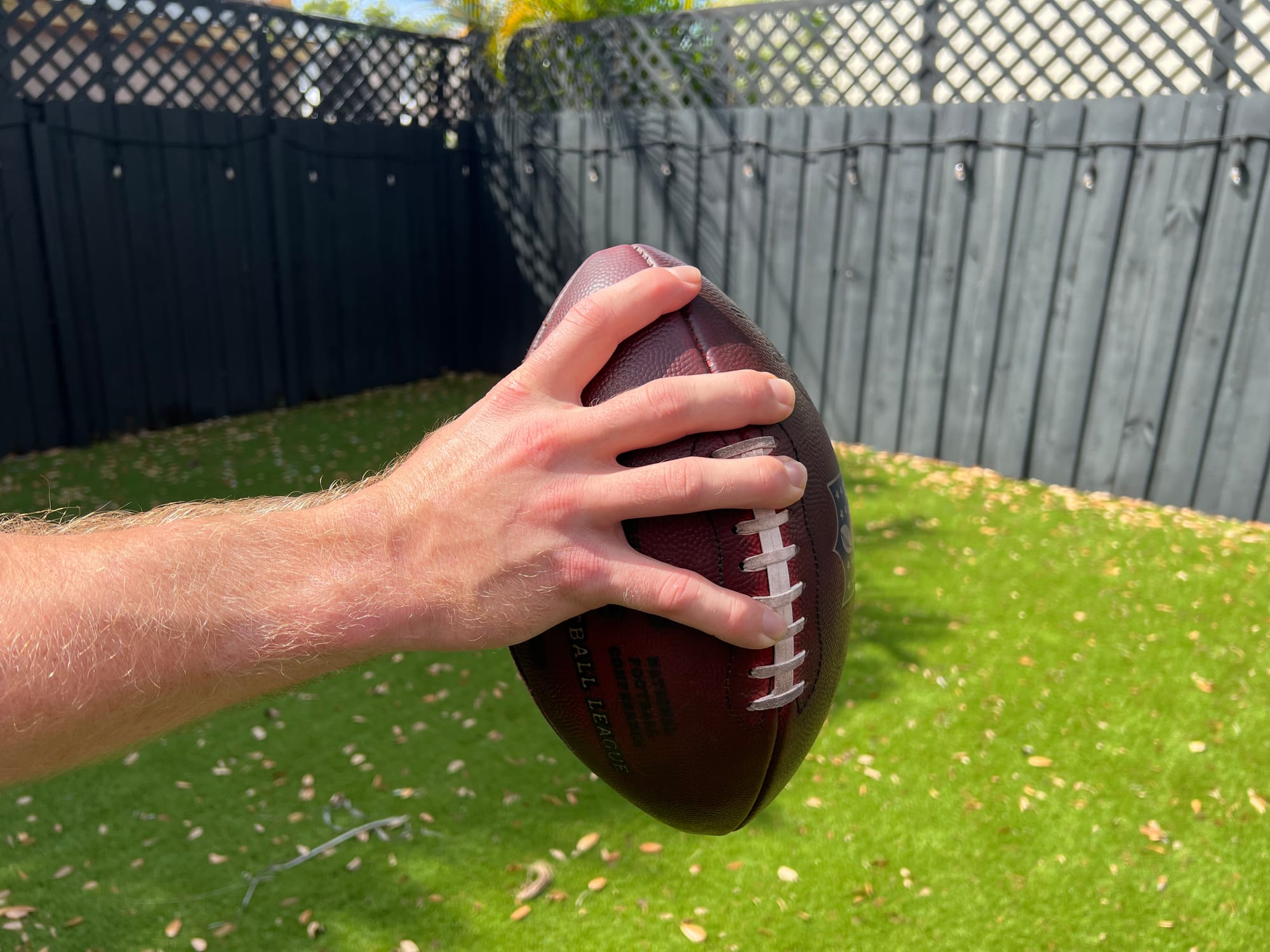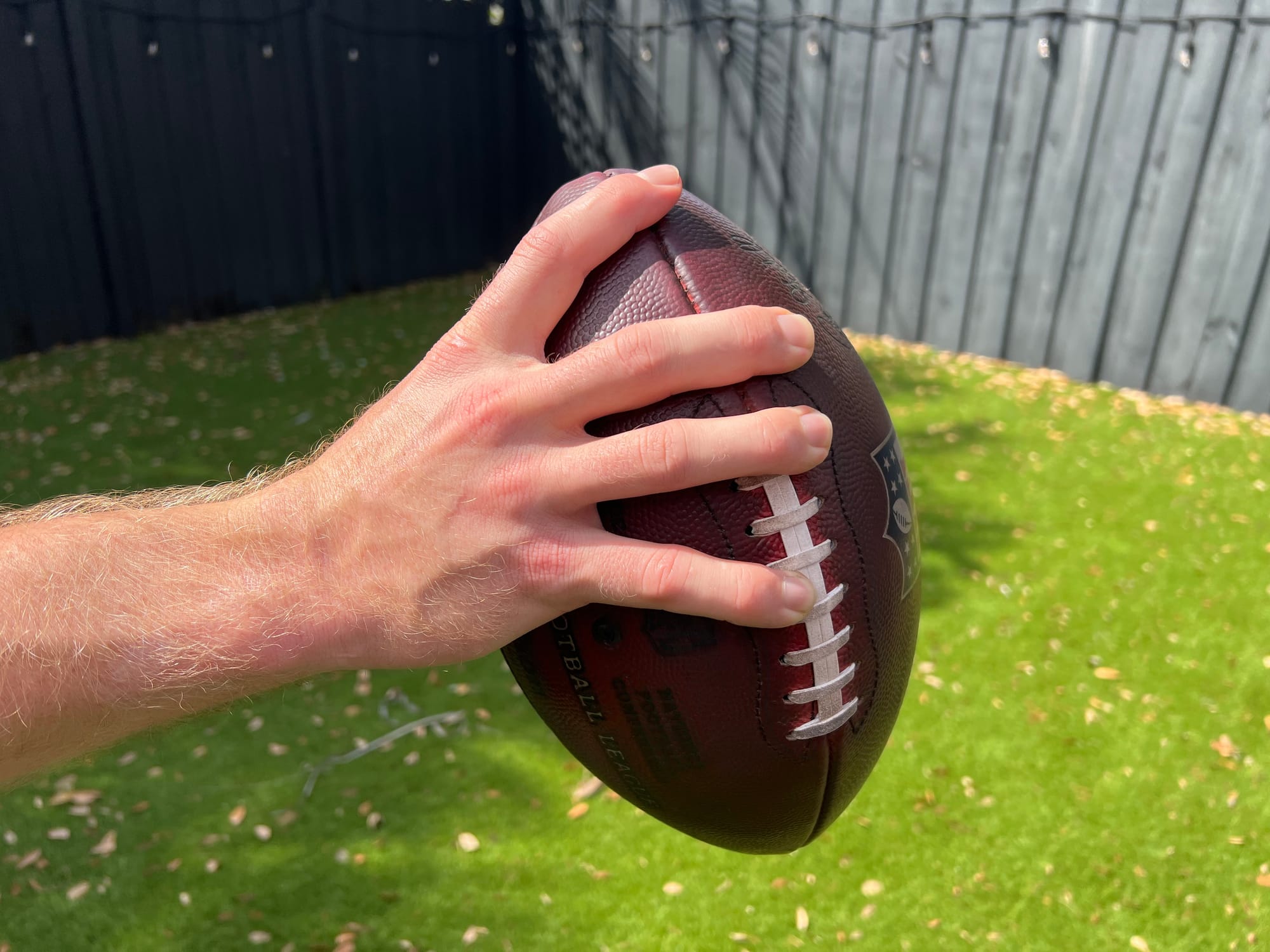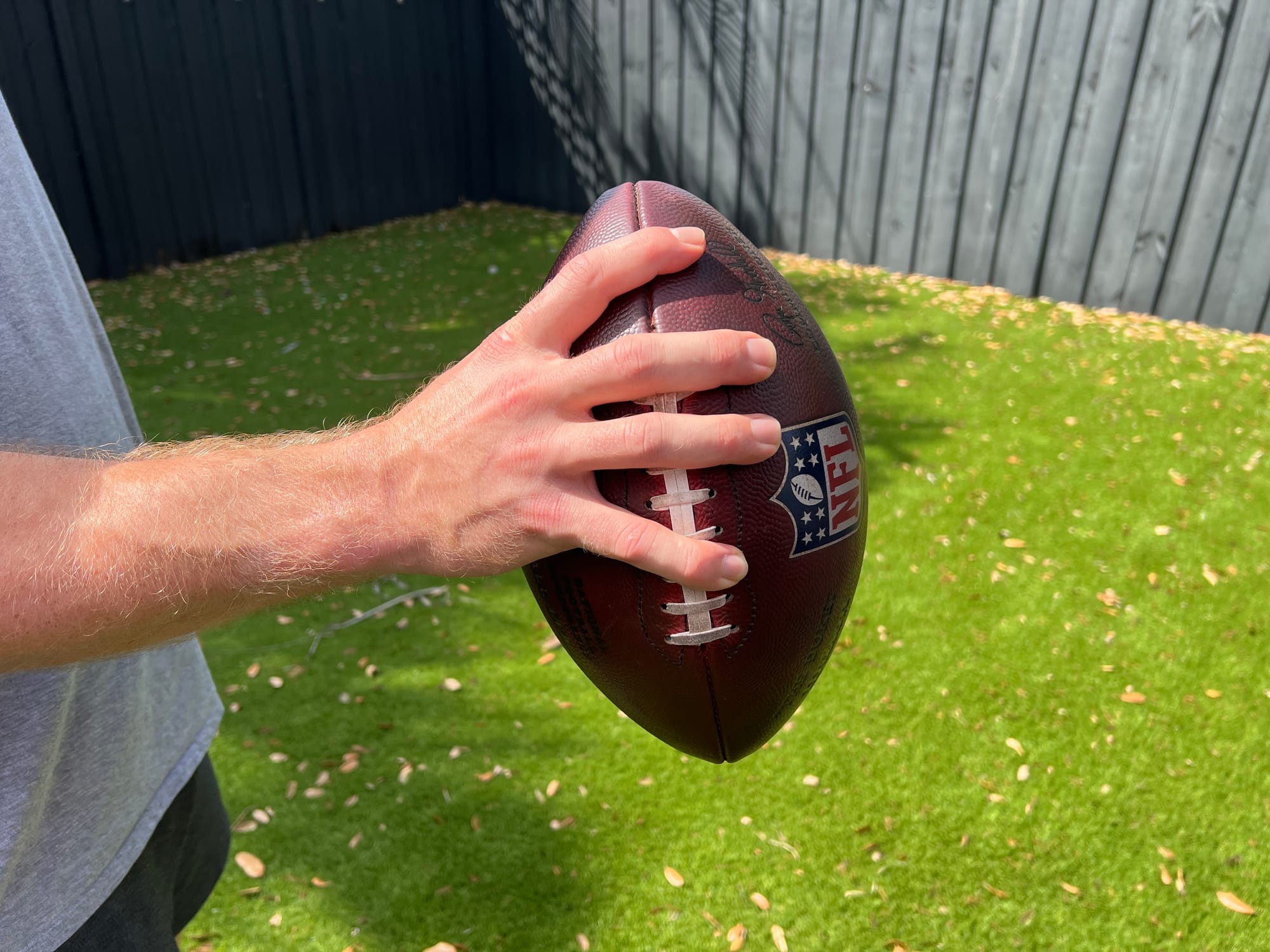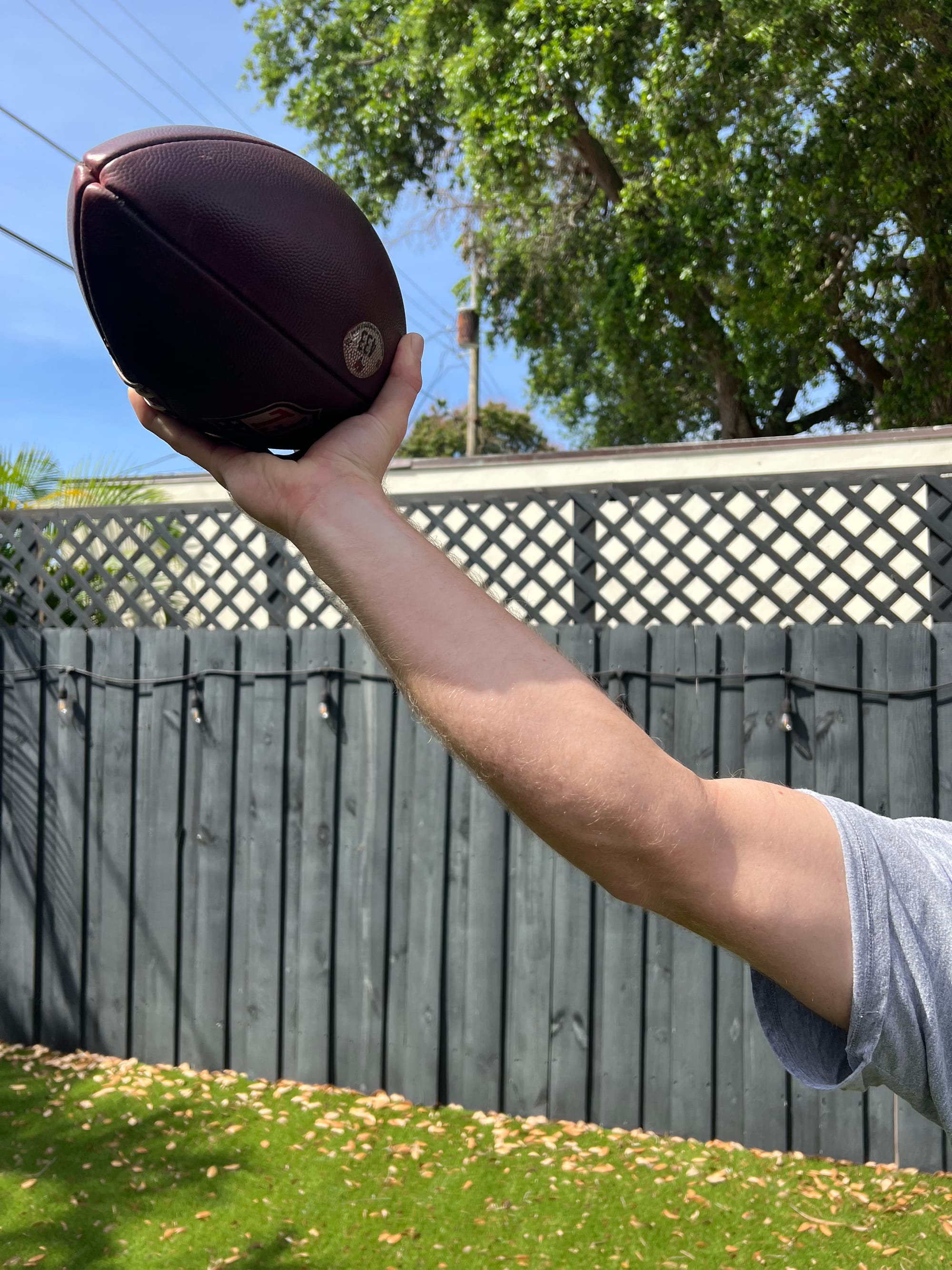How to Grip a Football

This a quick blog on the standard operating procedure for gripping a football. It's divided into four sections including finger placement, palm space, factors that influence spin, and wrist position. These are all Tom Gormely's thoughts as he is the expert on biomechanics. I simply combined them into this blog.
Finger Placement
The most common NFL grips are:
Ring finger over the second lace and pinky under the fifth.

Ring finger over the first and pinky under the fourth.

And some (including myself) go ring finger over the second and pinky over the fifth.

Hand size can impact grip choice. However, the focus around grip should be to grip the most central “fattest” part of the ball you can. This helps impart force and spin to the widest and most stable part of the ball enhancing spiral tightness. Additionally, gripping too far back can create the pointer finger to press down at ball release and “kick the tail” creating a tail wobble on a throw or turn the ball laterally off axis.
Palm Space
Space between the palm and thumb, as well as a reduction of palm contact, allows for a loose and relaxed grip seated in the fingers. Excessive palm contact and pressure can reduce spin, kick the ball off-axis, or cause various other inefficiencies.

Factors Influencing Spin
We aim to impart spin with forearm pronation, wrist flexion, and finger pressure. Timing and placement of fingertip roll-off and pressure allow the most central point of pressure and ball spin. Reducing palm contact and maintaining proper thumb position (keeping a “C” shape instead of cupping behind the ball) allows the fingers to play a central role in the transfer of force to the ball and in enhancing spin with small amounts of surface area contact.

Wrist Position
The wrist position should be maintained in a neutral or slightly flexed position. Preventing wrist extension will not only help enhance spin but also reduce degrees of freedom in the throwing motion that may cause timing errors.

If you Google the top NFL quarterbacks, you will see their grip follows suit with what has been portrayed in this article.
If you're interested in QB specific throwing, lifting and sprint training, customized to you, with the same systems used to train NFL Quarterbacks, take the assessment and get the app at kinetex.co. If you're interested in reading about all things quarterbacking and throwing biomechanics, subscribe to the blog..
